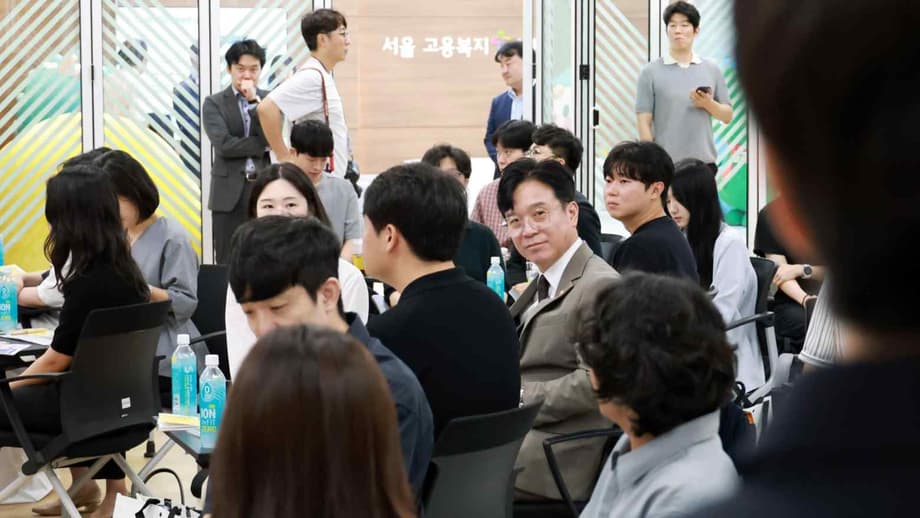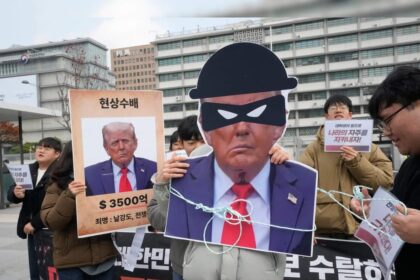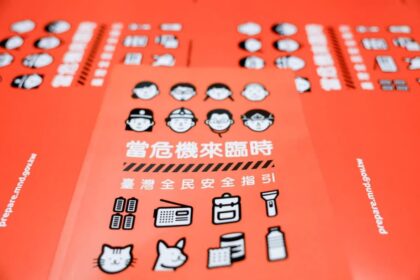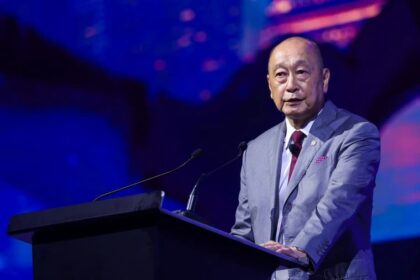A growing share of young people are idle despite a tight labor market
South Korea is confronting a troubling rise in the number of young people who are neither in education, employment, nor training. The trend is accelerating even as the country posts record employment levels for the population as a whole. According to Statistics Korea, 443,000 people aged 15 to 29 were out of school, out of work, and not looking for a job in July, the highest figure for any July on record. This group accounted for 5.4 percent of an estimated 8.15 million young people, up from rates in the 2 percent range a decade ago. The youth employment rate fell to 46.5 percent in July, while the headline unemployment rate dipped as many discouraged young adults exited the labor force entirely.
- A growing share of young people are idle despite a tight labor market
- What NEET means and why different counts exist
- What is driving young people out of the labor market
- Why it matters for growth and families
- How the government is responding
- Do support programs work
- What Korea can learn from Germany and others
- What employers and universities can change now
- The Bottom Line
Behind the numbers is a complex mix of fractured transitions from school to work, a shortage of stable entry level roles, and growing disillusionment with available opportunities. Survey data collected alongside official statistics shows that a majority of young people counted in this category say they do not want to work at the moment. Among those who do want to work, many cite a lack of jobs with acceptable pay and conditions, mismatches between their education and openings, and the difficulty of finding opportunities near where they live. The spike has set off alarms inside government, where leaders link rising inactivity among young Koreans to weak household formation and an already severe demographic crunch.
What NEET means and why different counts exist
NEET stands for not in employment, education, or training. The OECD definition counts any young person not employed and not enrolled in formal education or training, including those who are actively searching and those who have stopped looking. Domestic headline figures often focus on the portion of youth who are not only out of work and school, but also not seeking a job. This difference helps explain why Korea’s NEET picture looks much worse in international comparisons than in monthly national unemployment reports.
A government backed analysis by the Korea Employment Information Service found that 18.3 percent of Koreans aged 15 to 29 were NEET in 2022 on an OECD comparable basis. That share ranked near the top among major OECD economies. It edged up from 17.5 percent in 2014 while the OECD average fell from 15.7 percent to 12.6 percent. The rate surged to 20.9 percent during the depths of Covid 19 and has eased since, but it remains higher than a decade ago. The profile of those counted as NEET is changing too. The share of young men in NEET status has risen since the late 2010s, while the share of young women has inched down. Late twenties men now account for a larger portion of the total. The NEET rate among male university graduates stands out, reaching into the twenties, which is the highest by education group in the KEIS analysis.
Another striking shift is behavioral. The KEIS categorized young NEETs into several types, including active job seekers, education preparers, caregivers, those with health issues, those awaiting military service, and a non job seeking group that is neither studying nor making concrete plans. Only the non job seeking group grew in recent years. That finding points to deeper motivational and mental health challenges beyond simple job matching.
What is driving young people out of the labor market
Many young Koreans report that the jobs within reach do not match their expectations for pay, security, or social mobility. Labor market dualism matters. Large conglomerates and the public sector offer high wages and stability, while small and medium sized enterprises struggle to compete on compensation and career ladders. The result is a queue for coveted positions and reluctance to take roles seen as unstable or dead end, even if they offer immediate work experience.
Prestige bias and concentration of power
South Korea’s family controlled conglomerates, known as chaebols, remain central to economic life. The four largest groups account for a large share of national output, yet these firms provide a relatively small slice of jobs. Competition for entry level seats is intense. Hundreds of thousands of applicants have sat standardized tests for a chance at a limited number of postings at leading firms. This prestige economy nudges graduates to wait for the next recruitment cycle rather than build careers in smaller companies. Movement from smaller firms to top tier employers is rare, which reinforces the wait. The outcome is visible in overqualification in part time or temporary roles and in rising inactivity among university graduates.
Credential inflation and skill mismatches
South Korea has one of the highest rates of tertiary education in the OECD. Yet the payoff from an additional degree is no longer guaranteed. Studies find that the earnings premium for college graduates over high school graduates is modest given the time and expense, and the unemployment rate among graduates can be higher than among less educated peers. Employers report shortages in specific fields such as information and communications technology, while many graduates hold credentials that are less aligned with current demand. University curricula adjust slowly and are shaped by enrollment caps and intense competition for spots in Seoul. Vocational education and apprenticeships, which could smooth the school to work transition, still face stigma despite promising outcomes in pilot programs.
Gender patterns, age effects, and location
The structure of military service and job search strategies helps explain why NEET rates for men have risen in late twenties cohorts. Many men delay full time entry as they prepare for competitive exams or aim for higher quality roles, while many women enter the workforce sooner through temporary or irregular positions. Location matters as well. A significant share of those who wish to work say they cannot find suitable jobs nearby, which reflects the concentration of opportunities in a few urban corridors and rising housing costs that limit mobility for new graduates.
Mental health and social isolation
Psychological strain is an underappreciated driver of inactivity. Local surveys suggest that hundreds of thousands of young people live in isolation or seclusion. Nonprofits working with NEET youth describe a pattern that starts with repeated failed applications or negative work experiences, followed by anxiety, health issues, and withdrawal from ordinary routines. That cycle makes later engagement with training or employment programs more difficult, especially when public services are aimed at the most motivated job seekers rather than those who first need counseling and peer support.
Why it matters for growth and families
Rising youth inactivity carries a steep economic price. One estimate pegs the cost of the NEET population at more than 60 trillion won per year, roughly 3 percent of GDP, from lost output, foregone taxes, and added social spending. The long term scarring risk is real. People who spend extended periods out of school and work often face lower wages and irregular employment later in life. Health and life satisfaction suffer. Employers lose a pipeline of skilled entrants, and small firms feel persistent shortages that hold back expansion.
The social effects are visible in Korea’s family formation crisis. Young people are delaying or forgoing marriage and childbirth, citing unstable employment and high housing costs. Marriage rates are at historic lows, and the total fertility rate has fallen to record levels. Communities also report rising loneliness and civic disengagement among young adults, especially those who remain at home and disengage from training or work. The demographic and social pressures compound each other, which is why policymakers frame youth inactivity as a national challenge.
How the government is responding
Authorities have announced a series of measures aimed at pulling young people back into the labor market. Nearly 1 trillion won is being invested across programs that expand internships, provide job experience placements, and improve matching between youth and employers. The number of subsidized on site work experiences is being increased in both public and private organizations. New platforms bundle internship and placement information in one place. Matching services that started with college students are widening to include high school students to reduce the gap between graduation and first jobs.
Policymakers are also trying to support retention and work quality. Funding has been set aside for onboarding assistance to help recent hires settle into roles. Firms that shorten working hours or improve scheduling can receive subsidies, an effort to make smaller employers more attractive. For young adults who care for family members and cannot work temporarily, monthly cash support is being expanded. Officials acknowledge that the lack of quality jobs and skill mismatch are core issues, and they say new measures will focus on both placement and preparation.
Do support programs work
Evidence from targeted initiatives suggests progress is possible when programs address both motivation and opportunity. The Vision Plan Program, evaluated across multiple communities between 2016 and 2018, combined prevention with hands on employment support for disadvantaged youth. A rigorous comparison of participants and non participants found that participants were 8 percent more likely to seek work and 7 percent less likely to be NEET by the end of the program period. The model paired coaching with practical steps such as résumé preparation, interview practice, and structured work experience. The results underline a lesson echoed by practitioners working with isolated youth. Career services must be integrated with mental health support and peer networks, not offered in isolation.
Smaller scale reforms inside secondary and post secondary education have also delivered gains. Meister high schools and work study tracks that link students to employers early report higher employment rates for graduates. Yet these channels serve a small share of students and still compete with strong cultural preferences for four year university degrees. Scaling what works will require stronger employer participation and guarantees on job quality to convince students and families that alternatives to the college race are worthwhile.
What Korea can learn from Germany and others
International comparisons point to concrete ideas. Germany has long blended classroom learning with apprenticeships that teach market ready skills. Employers help shape curricula, commit to training places, and later absorb many trainees into permanent jobs. Countries that use this dual approach see smoother transitions from school to work and more balanced risk sharing across generations. Policy research also highlights the value of automatic stabilizers and robust unemployment insurance that prevent recessions from falling hardest on entrants to the labor market. In Korea, a stronger emphasis on mid level technical skills, employer backed apprenticeships, and career counseling in high school could reduce the choke point at university graduation.
None of these steps reduce the role of large firms in growth. They do broaden the set of valued career paths. When SMEs can offer clear training, credible progression, and better working conditions, more young people will choose them as first employers. Public reporting on pay and retention by employer size and sector would help students make informed choices before they commit to years of preparation for a small set of coveted jobs.
What employers and universities can change now
Employers can improve hiring and retention by widening entry channels and shortening the gap between education and the first paycheck. Paid internships, project based assessments, and apprenticeships lower the barrier to entry for students outside elite campuses. Firms can reduce heavy reliance on early credential screens and adjust performance reviews to value skills gained in SMEs and startups. Better pay transparency and predictable schedules matter for attracting youth who cannot rely on family support for extended job searches.
Universities can align programs with demand in fast growing fields such as digital, green technology, and care services. Stronger partnerships with regional employers can create more local placements, which matters for students who cannot easily move to Seoul. Career services should invest in outreach to students who are disengaged or undecided, not just top performers. Counseling and mental health support should be part of the default package, since motivation and well being affect job search outcomes as much as résumé polishing does.
The Bottom Line
- Statistics Korea counted 443,000 youth not studying, not working, and not seeking work in July, the highest figure for any July on record.
- On an OECD comparable basis, the youth NEET rate was 18.3 percent in 2022, up from 2014 while the OECD average fell.
- Men in their late twenties and male university graduates are overrepresented among NEETs, and the non job seeking group is growing.
- Structural factors include the prestige pull of chaebols, limited mobility from SMEs to large firms, and skill mismatches in fast growing sectors.
- Psychological strain and isolation are common among disengaged youth, which complicates re entry into training or jobs.
- The government is investing nearly 1 trillion won in internships, matching services, onboarding support, and caregiver allowances.
- Evidence from targeted programs shows that integrated support can raise job seeking and reduce NEET rates when scaled with quality safeguards.
- Adopting more dual training, expanding vocational pathways, and improving job quality at smaller firms would help close the school to work gap.












